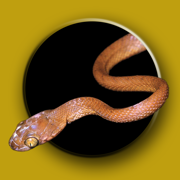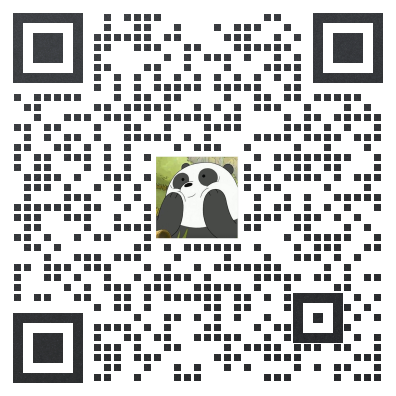Australian Snake ID
开发者: LucidMobile
中国
版本统计
1609天5小时
最新版本上线距今
0
近1年版本更新次数
2019-12-23
全球最早版本上线日期
版本记录
版本: 0.2.0
版本更新日期
2020-06-27

Australian Snake ID
更新日志
Updated identification key, fact sheet content and images. Minor improvements to the app theme and look and feel.应用描述
Australian Snake ID by Hal Cogger
Australia boasts a rich snake fauna of about 180 species of land snakes, with a further 36 species of venomous sea snakes in its surrounding oceans. Identifying a snake that has been observed in the wild before disappearing into the bush [or ocean], and so cannot be examined close-up, is fraught with difficulties. Some groups of snakes, such as the seven (7) different kinds of death adders that occur throughout continental Australia, share a distinctive shape and form of tail, and are instantly recognisable. The 47 worm-like blind snakes (Family Typhlopidae), with their unformed eyes and nearly always a distinctive blunt spiny tip to their tails, are also instantly recognisable as a group, but immensely difficult to identify to species without the aid of a microscope.
To a specialist familiar with them, subtle differences in body form (i.e. slender or heavy build, narrow neck, broad head) will often allow the recognition of a snake species at a glance, or the colour or pattern alone may be quite distinctive and diagnostic. But to accurately identify the majority of Australia's snakes requires checking finer details of body features - the number of scales around the middle of the body or along the belly and tail, or the configuration of the scales on the head, or the nature of the individual scales - characteristics that can only be observed if the snake is in hand. Consequently the ease and accuracy of identifying an Australian snake depends on being able to closely examine the finer details of its physical characteristics.
Where up-close examination of a snake is not feasible, this guide asks for some basic information (approximate size, dominant colour(s), location, etc) and presents the user with a series of photographs of species likely to be encountered at the location where the observation was made, and that can roughly match the few characters observed. The user is then invited to work through the gallery of potential species to find the one (or more) that most closely resembles the snake observed. Information about other features of these species (their habits and habitats) can then be used in an attempt to eliminate as many species as possible from the list of 'possibles'.
If the snake to be identified has been killed or captured, its identity can be established with a much higher level of accuracy and certainty. This will usually involve first becoming familiar with the characters most often used in snake identification, by following the diagrams and examples provided - a task that becomes much easier with practice and familiarity. But whenever you end up with two or more "possibles" at the end of an identification session, then do as suggested in the absence of a specimen - work through the gallery of remaining "possibles" to find the one that most closely resembles the snake in hand.
Today an increasing number of species - of snakes and other animals - are being identified on genetic grounds by comparing the DNA of specimens from a range of localities. Sometimes, species identified by this method may be physically similar to, or externally indistinguishable from, related species, making their identification in the field either ambiguous or impossible. However, if their geographic ranges don't overlap then location itself may be a diagnostic distinguishing feature. It is for this reason that regional location is a critical early character used in this app.
Authorship: Dr. Hal Cogger
This app was created using Lucid Builder v3.6 and Fact Sheet Fusion v2. For more information please visit: www.lucidcentral.org
To leave feedback or request support, please visit: apps.lucidcentral.org/support/版本: 0.1.0
版本更新日期
2019-12-24

Australian Snake ID
更新日志
暂无更新日志数据
应用描述
Australian Snake ID by Hal Cogger
Australia boasts a rich snake fauna of about 180 species of land snakes, with a further 36 species of venomous sea snakes in its surrounding oceans. Identifying a snake that has been observed in the wild before disappearing into the bush [or ocean], and so cannot be examined close-up, is fraught with difficulties. Some groups of snakes, such as the seven (7) different kinds of death adders that occur throughout continental Australia, share a distinctive shape and form of tail, and are instantly recognisable. The 47 worm-like blind snakes (Family Typhlopidae), with their unformed eyes and nearly always a distinctive blunt spiny tip to their tails, are also instantly recognisable as a group, but immensely difficult to identify to species without the aid of a microscope.
To a specialist familiar with them, subtle differences in body form (i.e. slender or heavy build, narrow neck, broad head) will often allow the recognition of a snake species at a glance, or the colour or pattern alone may be quite distinctive and diagnostic. But to accurately identify the majority of Australia's snakes requires checking finer details of body features - the number of scales around the middle of the body or along the belly and tail, or the configuration of the scales on the head, or the nature of the individual scales - characteristics that can only be observed if the snake is in hand. Consequently the ease and accuracy of identifying an Australian snake depends on being able to closely examine the finer details of its physical characteristics.
Where up-close examination of a snake is not feasible, this guide asks for some basic information (approximate size, dominant colour(s), location, etc) and presents the user with a series of photographs of species likely to be encountered at the location where the observation was made, and that can roughly match the few characters observed. The user is then invited to work through the gallery of potential species to find the one (or more) that most closely resembles the snake observed. Information about other features of these species (their habits and habitats) can then be used in an attempt to eliminate as many species as possible from the list of 'possibles'.
If the snake to be identified has been killed or captured, its identity can be established with a much higher level of accuracy and certainty. This will usually involve first becoming familiar with the characters most often used in snake identification, by following the diagrams and examples provided - a task that becomes much easier with practice and familiarity. But whenever you end up with two or more "possibles" at the end of an identification session, then do as suggested in the absence of a specimen - work through the gallery of remaining "possibles" to find the one that most closely resembles the snake in hand.
Today an increasing number of species - of snakes and other animals - are being identified on genetic grounds by comparing the DNA of specimens from a range of localities. Sometimes, species identified by this method may be physically similar to, or externally indistinguishable from, related species, making their identification in the field either ambiguous or impossible. However, if their geographic ranges don't overlap then location itself may be a diagnostic distinguishing feature. It is for this reason that regional location is a critical early character used in this app.
Authorship: Dr. Hal Cogger
This app was created using Lucid Builder v3.6 and Fact Sheet Fusion v2. For more information please visit: www.lucidcentral.org
To leave feedback or request support, please visit: apps.lucidcentral.org/support/










 京公网安备 11010502041000号
京公网安备 11010502041000号





